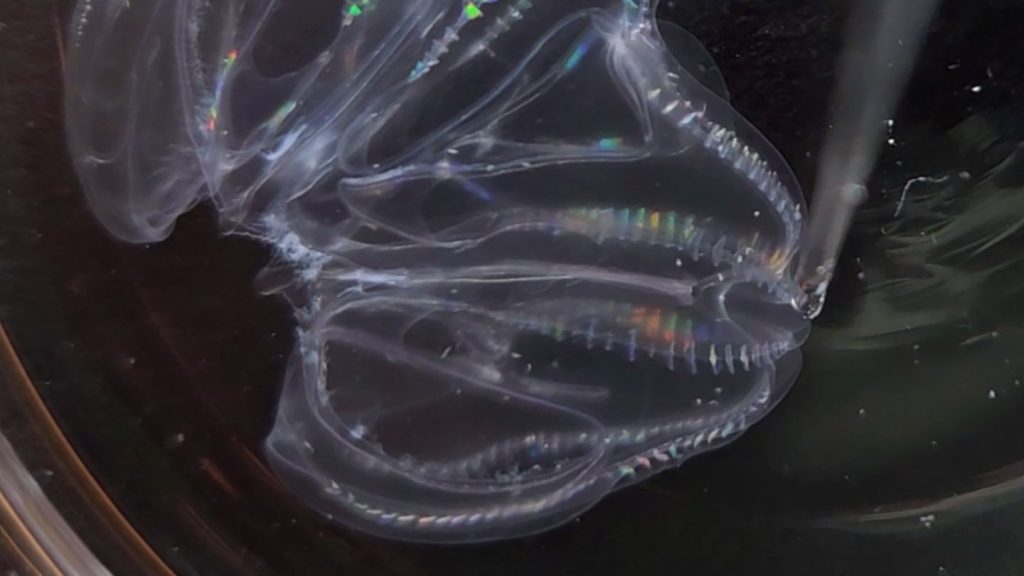A recent discovery in which sea walnuts, a type of comb jelly, have been observed to merge their bodies with neighboring sea walnuts has sparked interest in the scientific community. Biologist Kei Jokura first noticed this phenomenon when he found a large sea walnut floating in a tank, only to realize it was actually two jellies joined together. Further investigation revealed that the jellies had fused their bodies, potentially due to injuries sustained during the collection process.
In an attempt to better understand this fusion capability, Jokura and his colleagues conducted experiments in which they paired comb jellies and observed them fuse together overnight. The fused jellies not only looked like one organism but also acted as one, with shared nervous systems and circulating food between them. This level of coordination is not typically seen in comb jellies in the wild, according to marine biologist Steven Haddock, suggesting that fusion is a rare occurrence outside of a controlled lab setting.
The ability of sea walnuts to merge their bodies raises questions about their lack of allorecognition, the ability to distinguish between their body and another body. This trait is important in humans and can cause rejection of organ transplants. Comb jellies are one of the oldest lineages of animals, so the absence of allorecognition in sea walnuts may provide insights into how this trait evolved. However, further research into their neurology and genetic makeup is needed to fully understand this process.
The fusion capability exhibited by sea walnuts is not only fascinating from a scientific perspective but also demonstrates the complex abilities of these organisms. By merging their bodies, sea walnuts are able to coordinate their actions and functions, suggesting a level of cooperation and communication between individual organisms that is not commonly seen in nature. This discovery will likely lead to further exploration of the evolutionary implications of this trait and its potential impact on our understanding of allorecognition in animals.
The study of sea walnuts provides a unique opportunity to explore the capabilities of comb jellies in greater detail. By conducting experiments and observing the fusion of these organisms, researchers can gain valuable insights into their biology, behavior, and evolutionary history. Furthermore, this discovery may have broader implications for understanding complex behaviors and interactions among marine organisms, shedding light on the interconnectedness of life in the ocean.
Overall, the fusion capability exhibited by sea walnuts represents a remarkable feat of nature that challenges our understanding of biological processes and animal behavior. By studying these creatures and their unique abilities, researchers can uncover new information about the evolution of traits like allorecognition and gain a deeper appreciation for the diversity and complexity of life in the sea. This discovery opens up a world of possibilities for future research and exploration in the field of marine biology.


